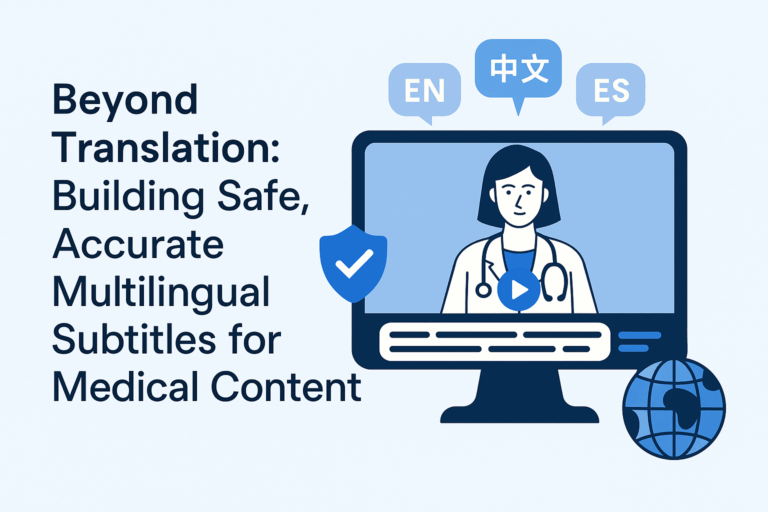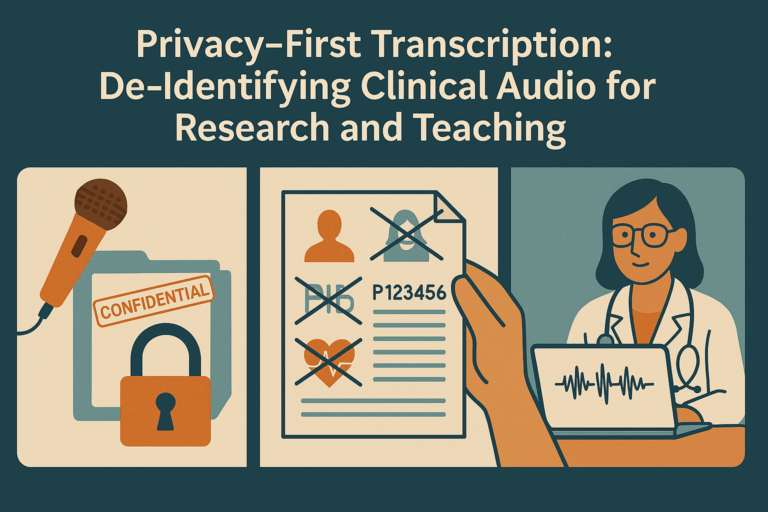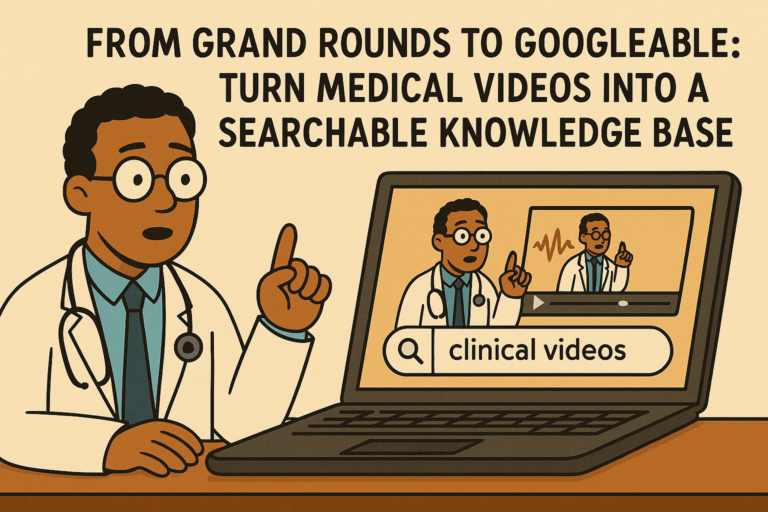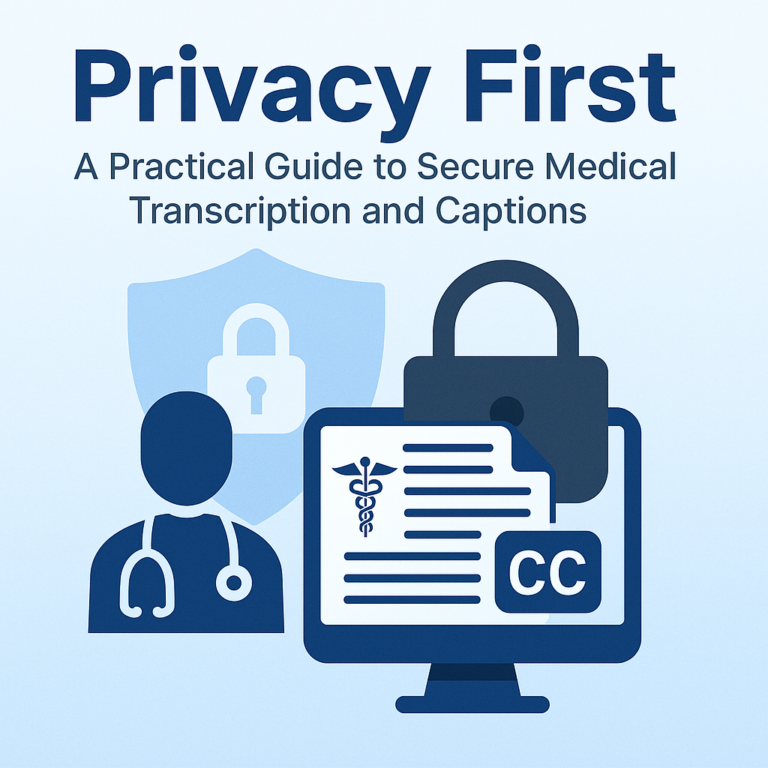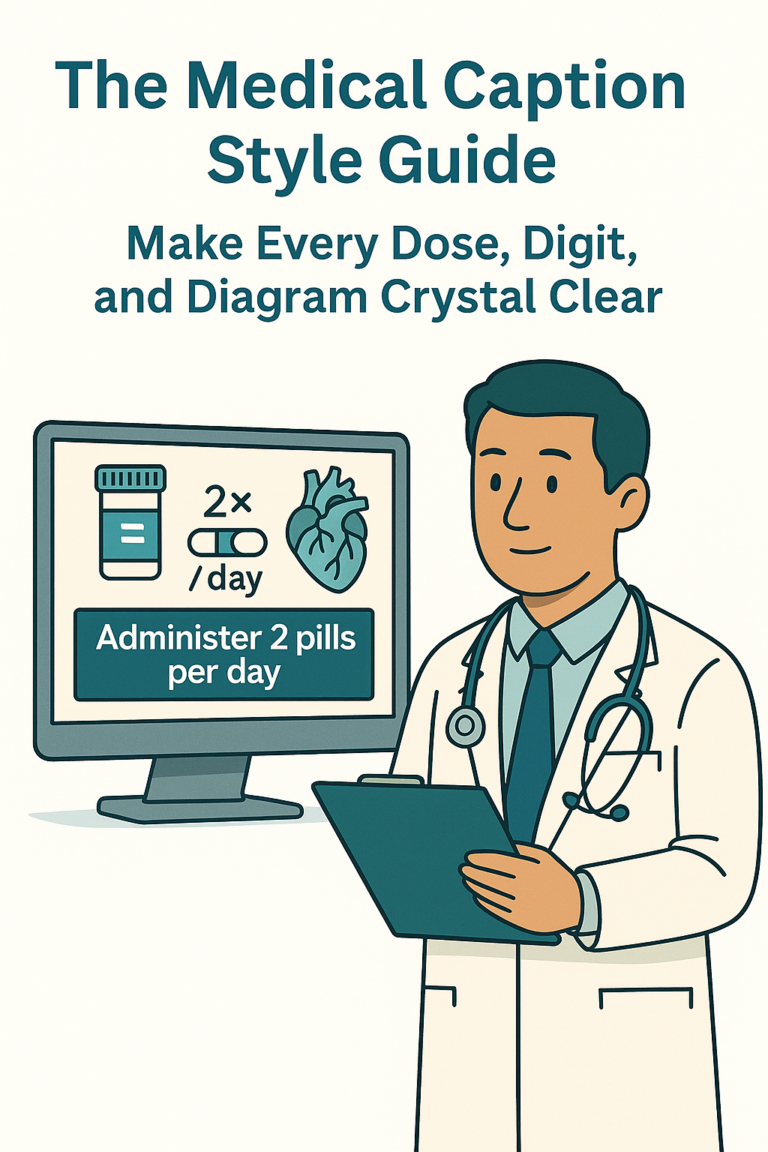As healthcare increasingly embraces digital tools, video has become a cornerstone of modern communication—used for patient education, telemedicine, staff training, and public health awareness. But with this shift comes responsibility: ensuring that your medical videos are not only informative but also accessible and legally compliant.
If your organization shares videos that lack closed captions or accessibility features, you could be at risk of violating key U.S. laws such as the Americans with Disabilities Act (ADA), Section 504/508 of the Rehabilitation Act, and indirectly, HIPAA. Here’s what you need to know—and how to ensure your video content meets both ethical and legal standards.
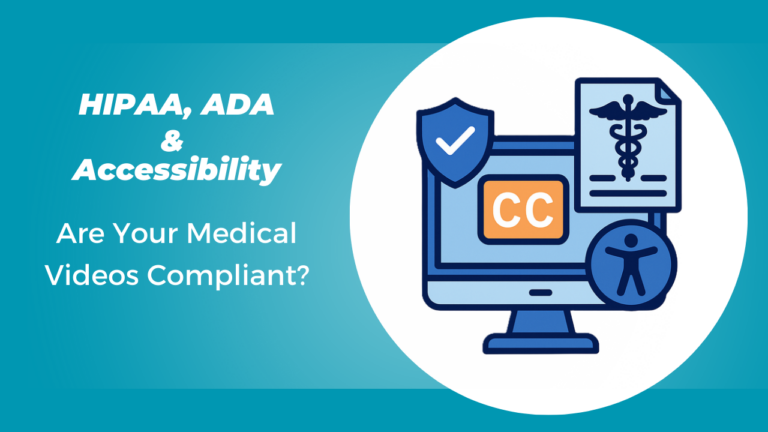
What Laws Apply to Medical Video Accessibility?
1. Americans with Disabilities Act (ADA)
The ADA requires that communications—including digital content—be accessible to individuals with disabilities. Under Title II (public institutions) and Title III (private entities that serve the public, such as hospitals and clinics), closed captions are considered an “auxiliary aid” required to ensure effective communication.
2. Section 504 and Section 508
Section 504 prohibits discrimination on the basis of disability in programs receiving federal funding, which includes many healthcare institutions. Section 508 specifically requires that all electronic communications and information technology (including videos) be accessible.
3. HIPAA and Digital Accessibility
While HIPAA doesn’t explicitly mention captions or video accessibility, it does require that protected health information (PHI) be shared in a secure, patient-accessible format. If a patient who is deaf or hard of hearing cannot understand an educational or diagnostic video due to missing captions, your organization may face challenges in proving effective and secure communication.
What Are the Risks of Non-Compliance?
Failing to caption your videos can result in:
Legal liability for ADA and Section 504/508 violations
OCR investigations and potential lawsuits
Loss of federal funding for non-compliant institutions
Reputational damage, especially in public-facing communications
Several high-profile lawsuits—including against universities, hospitals, and government agencies—have emphasized that video accessibility is not optional.
What Makes a Video Compliant?
To ensure compliance, your medical videos should include:
Closed captions for spoken content
Descriptions of important non-speech audio (e.g., alarms, instructions)
Keyboard and screen reader navigation (for embedded players)
Accurate medical terminology that is free from transcription errors
Videos must also be delivered in a format that is equally effective and timely for viewers with disabilities, matching the experience of other viewers.
How Closed Captions Ensure Compliance
Lorem ipsum dolor sit amet, consectetur adipiscing elit. Ut elit tellus, luctus nec ullamcorper mattis, pulvinar dapibus leo.
Closed captions do more than provide text for spoken words. They:
Ensure equal access for people with hearing loss
Satisfy ADA and Section 508 auxiliary aid requirements
Support multilingual auto-translation
Improve comprehension and engagement across all audiences
Enable training, diagnosis, and informed consent without exclusion
For example, a video explaining how to administer insulin must be fully understandable by every patient—regardless of hearing ability—or your institution could be liable for unequal treatment.
Why MedXcribe?
MedXcribe is an AI-powered captioning tool designed specifically for the medical industry. It provides:
Clinically accurate transcripts with correct medical terms
Support for HIPAA-compliant environments
Offline and secure workflows
Fast turnaround for lectures, consultations, and training videos
Captions that meet ADA, 504, and 508 standards
Whether you’re a hospital, private clinic, university, or health tech company, MedXcribe helps you avoid legal pitfalls while improving access for every viewer.
Medical video accessibility is not a trend—it’s a legal and ethical necessity. By implementing closed captions and ensuring digital compliance, your organization shows a commitment to inclusion, reduces risk, and improves communication with all patients.
Make compliance your competitive advantage.
Let MedXcribe help you caption smarter, faster, and fully compliant.

